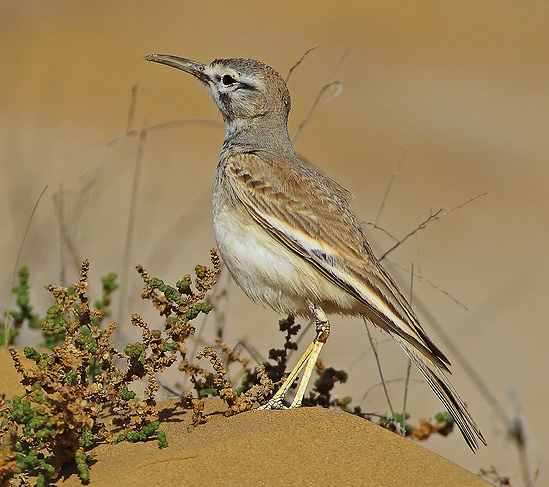 |
| Photo by Ahmet Karatas (Flickr) |
Common name:
greater hoopoe-lark (en); calhandra-íbis (pt); sirli du désert (fr); alondra ibis (es); wüstenläuferlerche (de)
Taxonomy:
Order Passeriformes
Family Alaudidae
Range:
This species is found in northern Africa, from the Cape Verde islands and northern Senegal, north to Morocco and east to Ethiopia, Sudan and Egypt, and through the Middle East into Afghanistan and Pakistan.
Size:
These birds are 19-22,5 cm long and weigh 33-40 g.
Habitat:
The greater hoopoe-lark is found in arid and desert areas, including including hot deserts, dry scrublands and to some extent in dry grasslands, from sea level up to an altitude of 2.000 m.
Diet:
They feed on the ground or in low scrubs, mainly taking insects and other invertebrates, but also seeds and sometimes the the fruiting bodies of certain fungi.
Breeding:
Greater hoopoe-larks breed in February-August. The nest is a cup made of small sticks and placed on a low scrub or on the ground, sometimes at the base of a scrub. There the female lays 2-3 eggs which are incubated by both sexes for 17-20 days. The chicks fledge 17-23 days after hatching.
Conservation:
IUCN status – LC (Least Concern)
This species has a very large breeding range and the species is described as common and widespread. The population is estimated to be in decline following recorded regional declines in some parts of their range.







